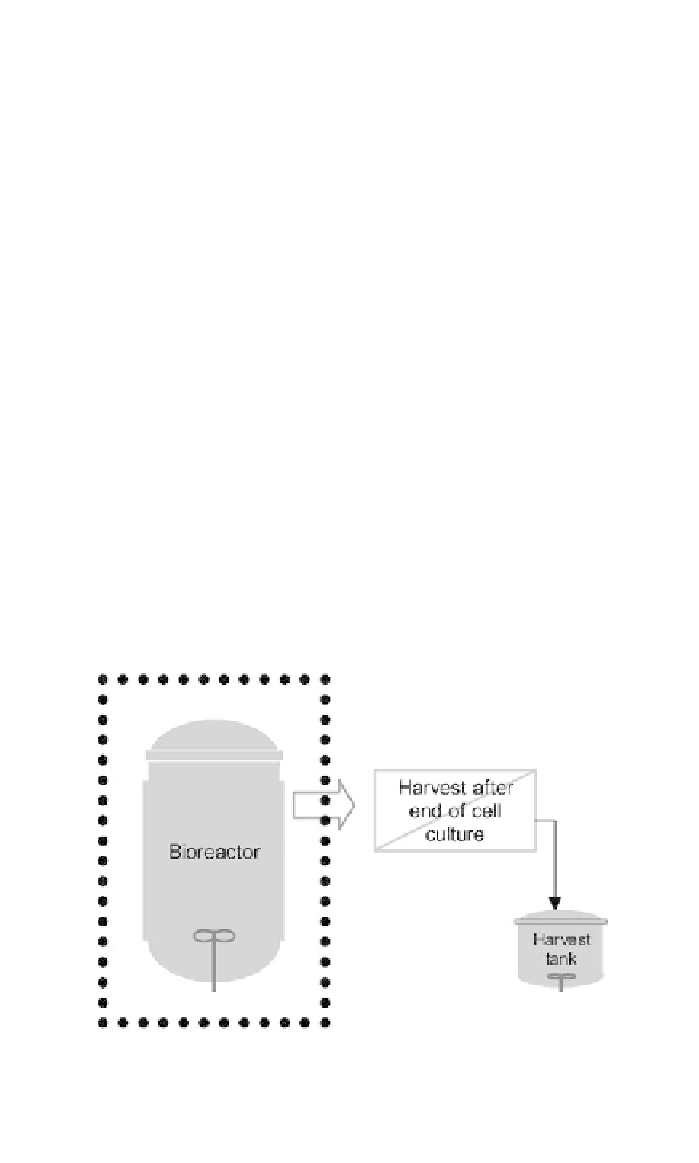Biology Reference
In-Depth Information
if the amounts of waste products (the by-products of nutrient consumption by
the cells) increase.
Fed-batch fermentations differ from batch fermentations by providing for
the addition of nutrients into the culture as required. This method allows a
much greater number of cells to be supported than batch fermentation.
The significance of cell number to product made results from the constitu-
tive production feature engineered into most commercial cell lines. With con-
stitutive production, one can reasonably assume that as long as a cell is pres-
ent and viable, it will continue to make product. Thus, cell number correlates
closely with amount of recombinant protein produced.
In addition to supplementing a culture with nutrients as required, spent
medium in the culture may be removed to reduce the amount of waste prod-
ucts. The process of feeding fresh nutrients and concurrently removing spent
media is called perfusion. The spent medium, called the harvest, contains the
protein product; the device used to separate the spent medium from the cells is
called a cell retention device.
Operationally, batch and fed-batch processes are relatively easy to execute
and perform reliably; perfusion processes are relatively difficult to execute and
in general use longer (i.e., >two-fold longer) production times. The number of
pieces of equipment that must be operated in a sterile manner within the ster-
ile envelope are depicted in Figure 3, Figure 4, and Figure 5. The number of
pieces and complexity of equipment in the sterile envelope correlates with the
difficulty in executing the three types of processes. A schema of the equipment
(bioreactor, media feed tank,and harvest tank) used for each of these process
Figure 3. Schematic of a bioreactor operating in batch mode. The sterile envelope, depicted by the
dotted line, encompasses only the bioreactor. The harvest operation, which includes cell separation
from the conditioned medium and concentration of the conditioned medium, is not performed under
sterile conditions.



